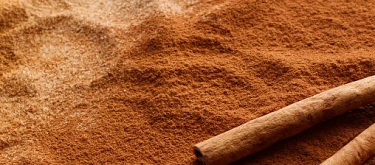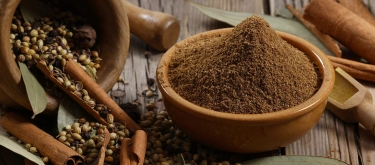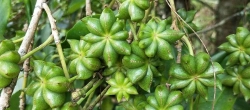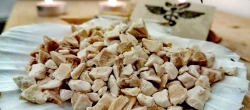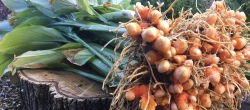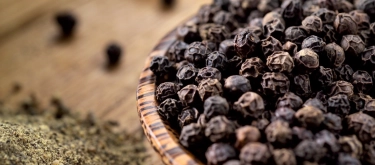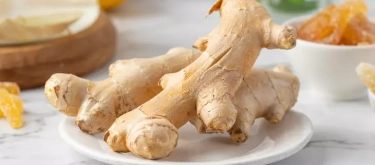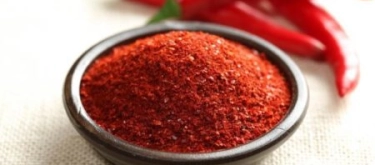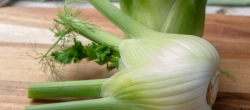Cinnamon: Taste Profile, Aroma, Benefits and Health Risks
Originating from the inner bark of trees belonging to the Cinnamomum genus, cinnamon has been prized for centuries for its unique flavor and medicinal properties. Today, it stands as a staple in both sweet and savory dishes worldwide. Whether sprinkled over oatmeal, infused in beverages, or used as a key ingredient in spice blends, cinnamon brings a burst of warmth and depth that can transform any dish into a comforting experience.
Cinnamon is a plant-derived spice that is naturally vegan, gluten-free, and low in calories. It is celebrated not only for its delicious flavor but also for its potential health benefits, such as antioxidant properties and anti-inflammatory effects. Enjoy cinnamon as part of a balanced diet, but be mindful of added sugars when used in processed foods.
What does Cinnamon taste like?
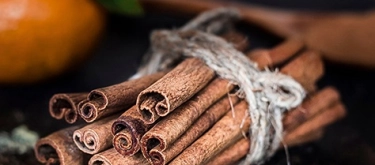
Complete Sensory Description
Taste:
Imagine the sensation of a gentle, warm embrace—cinnamon delivers a bold yet smooth flavor, combining a natural sweetness with a slightly spicy, peppery kick. Its taste is reminiscent of autumn evenings, with a hint of woodsy depth that lingers on your tongue like a whispered secret of ancient spice markets.
Aroma:
Cinnamon’s aroma is intoxicating, filling the air with a rich, warm fragrance that melds sweet, spicy, and woody notes. It is as if you’re stepping into an old-world spice bazaar, where the heady scent of exotic spices instantly transports you to faraway lands.
Texture:
In its powdered form, cinnamon is fine and silky, dispersing effortlessly into dishes and beverages. When you bite into a cinnamon stick, you experience a firm, slightly fibrous texture that releases bursts of flavor as you chew, offering a tactile contrast to its aromatic intensity.
Appearance:
Cinnamon appears in two primary forms: as a deep reddish-brown powder and as cinnamon sticks with a rolled, curled structure. Both forms exude a rustic elegance, with the powder showcasing a vibrant, earthy color and the sticks offering a visual reminder of its natural origins.
In-Depth Flavor Analysis
- Warm Spice Symphony:
The primary flavor of cinnamon is a harmonious blend of sweet, spicy, and woody notes. Its initial burst is sweet and slightly fruity, soon followed by a peppery heat that mellows into a long-lasting, warm finish. - Balanced Complexity:
The interplay of natural sugars and essential oils creates a multi-layered taste, where the sweetness is perfectly balanced by a mild, lingering spiciness. - Sensory Evolution:
With each bite or sip, the flavor unfolds gradually, revealing hints of citrus and a subtle earthiness that enhances its overall complexity. - Versatile Flavor Canvas:
Cinnamon’s neutral yet expressive taste makes it an ideal base for both sweet desserts and savory dishes, amplifying the flavors of other ingredients while contributing its own unique warmth.
Culinary Applications
- Baking:
Cinnamon is a beloved ingredient in baked goods such as cinnamon rolls, muffins, cookies, and cakes, where its warm flavor pairs beautifully with fruits, nuts, and spices. - Beverages:
Infuse your coffee, tea, or hot chocolate with a dash of cinnamon to add a comforting and aromatic twist that elevates your morning ritual. - Savory Dishes:
Incorporate cinnamon into stews, curries, and tagines to impart a subtle sweetness and complexity that enhances meat and vegetable dishes. - Spice Blends:
Use cinnamon as a key component in spice mixes such as garam masala, pumpkin spice, or barbecue rubs, where it contributes both warmth and depth. - Creative Desserts:
Drizzle cinnamon over fresh fruit, yogurt, or even ice cream to create an appealing contrast of flavors and textures that excites the palate.
Selection and Storage
Selecting Cinnamon:
- Choose high-quality cinnamon with a vibrant, uniform color and a rich, aromatic fragrance.
- Look for products labeled as "Ceylon" for a more delicate, refined flavor or "Cassia" for a bolder, spicier profile, depending on your culinary needs.
Storage Recommendations:
- Store cinnamon in an airtight container in a cool, dark place to preserve its essential oils and potency.
- Avoid exposure to heat and moisture, as these can degrade its flavor and aroma.
- Use within 12–18 months for optimal freshness and quality.
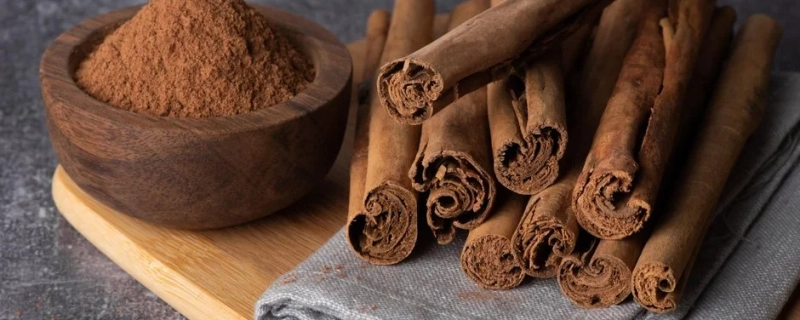
Nutritional Insights
- Antioxidant Rich:
Cinnamon is loaded with powerful antioxidants, which help protect cells from oxidative stress. - Anti-Inflammatory Properties:
Its natural compounds may help reduce inflammation, supporting overall health. - Blood Sugar Regulation:
Research suggests that cinnamon can assist in regulating blood sugar levels, making it a popular addition to diabetic-friendly diets. - Low-Calorie Flavor Booster:
With minimal calories, cinnamon adds robust flavor without significantly impacting your energy intake. - Nutrient Dense:
In addition to antioxidants, cinnamon provides trace minerals like manganese and iron, contributing to its overall nutritional benefits.
Expert Insights & Culinary Tips
- Optimal Timing:
For maximum impact, add cinnamon towards the end of cooking to preserve its delicate aromatic oils. - Experiment with Forms:
Try both ground cinnamon and cinnamon sticks—while ground cinnamon blends evenly, sticks can be used to infuse liquids and removed before serving. - Layering Flavors:
Combine cinnamon with complementary spices like nutmeg, clove, or ginger for a complex, layered flavor profile in baked goods and savory dishes. - Beverage Enhancement:
A cinnamon stick can be used as a garnish in hot beverages to impart a subtle flavor boost that evolves as you sip. - Avoid Overuse:
Because cinnamon is potent, a little goes a long way—start with a small amount and adjust to taste.
Interesting and Curious Facts
- Historical Legacy:
Cinnamon was one of the most prized spices in ancient times, often considered as valuable as gold. It played a pivotal role in trade routes and was highly sought after by ancient civilizations. - Medicinal Tradition:
Throughout history, cinnamon has been used in traditional medicine to treat various ailments—from colds to digestive issues—due to its antimicrobial and anti-inflammatory properties. - Cultural Symbolism:
In many cultures, cinnamon is associated with warmth, comfort, and love, frequently used in rituals and celebrations to invoke positive energy. - Botanical Variety:
There are several varieties of cinnamon, with Ceylon cinnamon being known as "true cinnamon" for its delicate flavor, while Cassia cinnamon offers a more robust, spicier taste. - Modern Innovation:
Chefs today are incorporating cinnamon into unexpected dishes, such as savory sauces and cocktails, proving that this ancient spice remains as versatile and innovative as ever.
How to Enjoy Cinnamon
- Sprinkle Over Breakfast:
Dust ground cinnamon on oatmeal, yogurt, or fresh fruit to start your day with a burst of warm flavor. - Infuse Beverages:
Add a cinnamon stick to your coffee, tea, or hot chocolate to create a subtly spiced, aromatic drink. - Enhance Baking:
Incorporate cinnamon into baked goods like muffins, cookies, or breads to infuse them with a comforting, nostalgic flavor. - Savory Applications:
Use cinnamon in small amounts in stews and curries to add depth and complexity to savory dishes. - Creative Garnishing:
Experiment by drizzling a light dusting of cinnamon over desserts, or mix it into homemade spice blends to elevate both sweet and savory recipes.
Harm and Dietary Considerations
- Potent Spice:
Cinnamon is very potent—using too much can easily overpower a dish. Start with a small amount and adjust to taste. - Allergen Awareness:
Although rare, some individuals may be allergic to cinnamon. Monitor for any adverse reactions, especially if you have sensitive skin or respiratory issues. - Blood Sugar Considerations:
Cinnamon can interact with blood sugar levels; while it may be beneficial for some, it should be used in moderation, particularly by those with diabetes. - Quality Control:
Choose high-quality cinnamon free from additives and contaminants to ensure both its flavor and safety. - Moderation and Balance:
Enjoy cinnamon as part of a balanced diet—its benefits are maximized when used thoughtfully in a variety of culinary applications.
Final Thoughts & Sensory Journey
Embark on a final sensory journey with cinnamon—a spice that captures the essence of warmth and tradition in every pinch. Envision the gentle caress of its sweet yet spicy flavor, reminiscent of ancient markets and cozy family kitchens. Whether you’re stirring it into your morning coffee or incorporating it into a hearty stew, cinnamon transforms everyday dishes into experiences brimming with history and heart. Let its rich aroma and multi-layered taste inspire your culinary adventures and evoke a sense of comfort and celebration.
References
- McGee, H. (2004). On Food and Cooking: The Science and Lore of the Kitchen. New York: Scribner.
- Harvard T.H. Chan School of Public Health. (2020). "Spices and Health: The Role of Cinnamon in Blood Sugar Regulation."
- Journal of Food Science. (2018). "Antioxidant Properties of Cinnamon: A Review."
